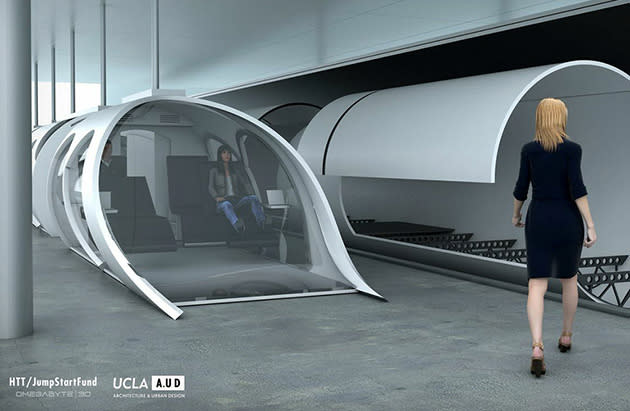Engineers are working for free to make Elon Musk's Hyperloop a reality

Nobody laughs much at Elon Musk anymore, but plenty of people snickered at his Hyperloop idea (okay, also the killer robot thing). To remind you, the Hyperloop is a series of underground trains powered by compressed air that transport folks between cities in tubes at around Mach I. While that may sound certifiably insane, a company called Hyperloop Transportation Technologies (HTT) doesn't think so, and with the help of some UCLA students, has made considerable progress developing the idea. According to Wired, the startup (assisted by JumpStartFund investors) has enlisted top engineers from companies like Boeing, Airbus and SpaceX willing to work on Hyperloop in their spare time in exchange for stock options.
Those folks work in teams depending on their talents and passions, but a lot of the work is being done by engineering students from UCLA's SupraStudio. So far, they've developed rough concepts for the train's route, the stations and capsules themselves. The goal was to keep the lines between cities as straight as possible to avoid motion sickness issues. The train cars would consist of bubbles that would unload from the side when the arrive at stations (as shown above), though the group found that Musk's idea for gullwing-style doors was impractical. The tubes would be stacked to travel in opposite directions, and like airlines, there would be business and economy class capsules.

HTT and the students have mostly figured out how to build the vacuum tubes and supports, but it still needs to figure out one important part: how to make the capsules flow along it friction-free. Musk suggested a compressor to create an "air-hockey" pocket of air, but the HTT leaders think that some kind of magnetic levitation system might work better. Nevertheless, it wants to start building a prototype as early as next year and told Wired the final product "can be built within a decade." (A national network, as shown above, is still far in the future, however.) The hardest part now might be finding investors brave enough to raise the anticipated $6-10 billion cost necessary to build the first 400-mile loop.
[Image credit: JumpStartFund/HTT]
